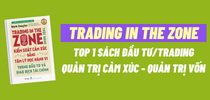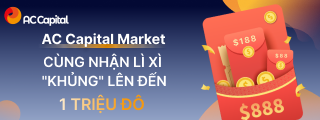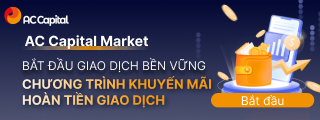Jewel Nguyen
Active Member
- 3,974
- 3,967
These are concepts learned in various courses. Thus, they include the “best” of each and are not unique to anything else. These strategies have been extensively tested and proven to be effective in real markets.
Important:
When learning any new strategy, always take the time to backtest on historical data. This will allow you to fully trust the method, as well as learn how to trade with accurate entries and small stop losses (below 10 pips).
RETAIL (how 95% of traders are taught to trade)
Trend
The general direction in which the market is moving
UPTREND (forms HH and HL). The market is also considered bullish.
(Note: the uptrend fails when the price forms a new structural LL. Wait for the new structural LH to confirm the trend change).
DOWNTREND (forms LH and LL). The market is also considered bullish (Note: the downtrend fails when the price forms a new structural HH. Wait for the new structural HL to confirm the trend change)
Support and resistance
Support - When 2 or more price points (Floor) are at the lows, this forms a support zone to which the price can react.
Resistance - When there are 2 or more price points at the highs (ceiling), it forms a resistance zone that the price can react to.
Momentum and pullbacks
Momentum → Strong and fast movement in the direction of the Trend
Pullback → Weak and slow movement in the opposite direction of the Trend
Fibonacci
61.8% Golden ratio
All we are concerned about when using Fibonacci is whether the market is in a premium / discount / equilibrium state.
We are only interested in using Fibonacci to see if the price has gone beyond the 50% Fibonacci line.
Fair Market Value = 50% (Equilibrium).
Discount - low prices (Fibonacci BELOW 50% Fibonacci) or Premium - expensive prices (Fibonacci - ABOVE 50% Fib)
Remember
We SELL only at Premium prices (Sell high)
and BUY only at Reduced prices (Buy Low)

Wave Theory Tip: Look at the market as LINE instead of candles. Cycles usually have 5 moves (3 impulses and 2 retracements / corrections).
After completing 1 full wave cycle, a NEW wave cycle may begin.
Inside Wave 1 → you can see the complete market cycle. in LTF Make sure each TF correlates with each other
4th and 5th waves (near the end of the trend) and ABC correction = harmonic patterns


The market is fractal, so you can see waves within waves on smaller timeframes. We are not using Elliott waves, but it is good to remember the fractal nature of the market.
MARKET STRUCTURE (MS)
This is the MOST IMPORTANT PART and basis of all our trade. It is very important to analyze the market structure (MS) and look for trades when the structure is clear.
1) Our HTF (daily / weekly) will define the OVERALL TREND (bearish / bullish)
2) H4 and H1 will determine MOMENT and INTERNAL TREND
3) M15, M5, M1 will define MOMENT

We can see that the H4 price movement (highlighted in red) is in a strong bearish trend (let's say the daily chart is also bearish).
However, we can see that the H1 price movement (in blue) is in a bullish trend. For an HTF chart (like H4) to get a pullback or pullback, this means that an LTF chart (like H1) must be bullish for the price to rally to form an H4 lower high. This is usually done at DP, Decision Point (orange frame), where institutions have their orders after liquidation has been withdrawn. So, when you work on smaller timeframes, always keep the bigger picture in mind. Remember the general direction of W / D. Trades with the highest likelihood are those in which you have aligned the market structure (for example, W, D, H4, H1 are bearish and we are looking for sells in a key area on lower timeframes )
If we are at the premium levels of our HTF-Fibonacci (D / W) levels when a smaller TF like H1 flattens out (which means it goes from bullish to bearish to “align” with the HTF trend), we can then look for a continuation of the trade (SELL and aim HTF at the lower low).
2 things we are looking for to see the structure changes:
1) BOS (break of structure) - extremely important
2) Wyckoff Accumulation / Distribution (optional, but you can see it)
WEEKLY SCHEDULE
After it has formed an initial HH on the W chart, we can expect a change in momentum or a bullish LTF structure, for example, an H4 will form so that it can create a PB (pullback) to form the next HL on W to continue HTF. Bullish trend

4H

H4 chart - you can see that after creating HL on W, H4 starts to create HH, HL (this is a rollback to W). This gives us the confidence to hold onto purchases for new W highs.
Momentum (MOM) The Momentum score will give you a lot of clues as to what is happening to the price and what the likelihood is that the price action will continue or not. Price action momentum is the speed at which price moves. (Although we can also use volume as a basis, since volume in Forex is not centralized, this is not a reliable indicator. We do not use volume in this strategy).
Look at M, ie how FAST / SLOW is it. Focus on RSPs (Real Structural Points)

You can see here that there was a STRONG momentum on the bearish down move, but the bullish up move is simply correcting through a complex pullback.
Always look for a FRESH Checkpoint (PTO) zone
FAST PTO = impulse wave
SLOW PTO = corrective wave / building order
The wick is the body in LTF.
In the chart above, you can see a STRONG IMPULSE moving down (STRONG MOMENT). This was followed by a SLOW correction (weak impulse) up. It's just a tricky rollback.
Also pay attention to the TIME it takes (for example, if a strong bearish move takes 2 days and it takes 7 days to recover, you know this is a correction / difficult pullback since the market has no bullish momentum).
Another example: if a bullish move rallied 100 pips in 2 candles, but the bearish pullback reached 80 pips after 12 candles, this gives you a sign that there is very weak bearish sentiment and the bullish price action is likely to continue.
The points of the actual RSP structure are still valid, and as long as the RSP high or low is not broken, the existing structure remains.
INSTITUTIONAL TRADE (IT)
3 ways to determine where IT got to market:
1) SHC (Stop Hunt Candle) / OB / Fake out / Large range of volumes (called by different names)
2) Buy before selling / Sell before buying (like orderblock)
3) Imbalance (lack of buyers / sellers in price action, leaving an imbalance that ultimately needs to be filled)
SMART MONEY CONCEPTS (SMC)
Have you ever wondered:
1) What happens when you press SL?
2) Who controls the market in an uptrend or downtrend?
3) Why was your SL received shortly before it went in your favor?
This is IT (Institutional Traders) looking for the liquidity market - a tug of war between buyers and sellers.
Liquidity = number of buyers or sellers.
Order Blocks (OB)
In these areas / zones, institutions manipulate the price and have some of their orders in drawdown. This "footprint" that they leave can be clearly seen in the order block. Price usually returns to these areas and we will have some kind of reaction to that.
Order blocks with imbalance (OBIM) are more likely as the market will always fill imbalances at some point in the future.
Bullish order block : LAST sell candle before impulse Bullish move (last sell to buy)
Bearish order block : last buy candle before impulsive bearish move (last buy to sell)
Institutions are behind these candles, since they were moving the market and are in a DD (drawdown) state, so they need to return the price to OBIM in order to reduce (break even) their losses.
Bearish Order Block with Imbalance Example

Bullish Order Block with Imbalance (OBIM) Example

The example above is a three month chart. I included it to show you the fractal nature of the market. Order Blocks and imbalance occur on every timeframe.
Note that if the price fails to completely close the imbalance on the initial move, it will revert (at some point in the future) to close the imbalance 100% (even a 1 pip imbalance is still considered an imbalance and the price will eventually will fill it in).
Always try to trade PRO TREND. Trade deals CONTINUOUS. So if the W / D / H4 charts are bullish and the H1 chart is bearish, wait until a confirmed BOS appears on H1 and it turns bullish so you can trade PRO TREND (in this case Bullish) and trade continuation. which corresponds to HTF charts.
Mitigation
Institutions have their own drawdown orders (DD), order blocks and imbalances are created. They move the price back to OBIM to DP (decision point) and their orders that were in drawdown are now softened (break even on their trades). Liquidity Providers (LP) have no spread / commission / swap value etc. their deals are very long until they want to unload them.
LIQUIDITY: EQUAL HIGHS (EQH) and EQUAL LOWS (EQL)
Liquidity means money.
We have been taught to look for double tops and go short there, and double bottoms and go long there. What happens when there are a ton of orders below DB and above DT and this is the liquidity that market makers are looking for.
Liquidity above the EQH (Equal Highs)


Liquidity below the EQL (Equal Lows)

Please note that EQH or EQL does not have to be on the pip. As long as it looks about a similar area, it fits. There will be liquidity.
An IT (institutional trader) would never go out of his way to buy a Retail SL as the retail traders' volume profits are paltry. PRESENT Interaction - Interbank (Between Banks)
IMBALANCE
An area of unequal trading in which there are ONLY BUYERS or ONLY sellers in the market. An imbalance is an ineffective / unhealthy price action. This shows the imbalance between buyers / sellers. The market will always seek to return to EQ. Look at the wicks of the candle above and below. If there is a gap (with a large candlestick), it is an imbalance.

When imbalanced, Wicks DO NOT fill each other (if they operate in accordance with their price action, not imbalance). An imbalance is simply a price not filled fairly. This is NOT mitigation. When trading imbalances, we need to SEE HOW THE PRICE REACTES HERE (since this is not an easing, the price should not reverse from this point).
ADVANCED SMART MONEY CONCEPTS
SHC (Stop Hunt Candle)
Most likely there will be SHC.
They digital traces of IT (institutional traders) Price is likely to come back here
We DO NOT trade SHC / OBIM → we wait for the price to return to them
We need to see a STRONG move after the SHC / OBIM candlestick to give it meaning.
https://telegra.ph/follow-the-money-10-14
Important:
When learning any new strategy, always take the time to backtest on historical data. This will allow you to fully trust the method, as well as learn how to trade with accurate entries and small stop losses (below 10 pips).
RETAIL (how 95% of traders are taught to trade)
Trend
The general direction in which the market is moving
UPTREND (forms HH and HL). The market is also considered bullish.
(Note: the uptrend fails when the price forms a new structural LL. Wait for the new structural LH to confirm the trend change).
DOWNTREND (forms LH and LL). The market is also considered bullish (Note: the downtrend fails when the price forms a new structural HH. Wait for the new structural HL to confirm the trend change)
Support and resistance
Support - When 2 or more price points (Floor) are at the lows, this forms a support zone to which the price can react.
Resistance - When there are 2 or more price points at the highs (ceiling), it forms a resistance zone that the price can react to.
Momentum and pullbacks
Momentum → Strong and fast movement in the direction of the Trend
Pullback → Weak and slow movement in the opposite direction of the Trend
Fibonacci
61.8% Golden ratio
All we are concerned about when using Fibonacci is whether the market is in a premium / discount / equilibrium state.
We are only interested in using Fibonacci to see if the price has gone beyond the 50% Fibonacci line.
Fair Market Value = 50% (Equilibrium).
Discount - low prices (Fibonacci BELOW 50% Fibonacci) or Premium - expensive prices (Fibonacci - ABOVE 50% Fib)
Remember
We SELL only at Premium prices (Sell high)
and BUY only at Reduced prices (Buy Low)
Wave Theory Tip: Look at the market as LINE instead of candles. Cycles usually have 5 moves (3 impulses and 2 retracements / corrections).
After completing 1 full wave cycle, a NEW wave cycle may begin.
Inside Wave 1 → you can see the complete market cycle. in LTF Make sure each TF correlates with each other
4th and 5th waves (near the end of the trend) and ABC correction = harmonic patterns
The market is fractal, so you can see waves within waves on smaller timeframes. We are not using Elliott waves, but it is good to remember the fractal nature of the market.
MARKET STRUCTURE (MS)
This is the MOST IMPORTANT PART and basis of all our trade. It is very important to analyze the market structure (MS) and look for trades when the structure is clear.
1) Our HTF (daily / weekly) will define the OVERALL TREND (bearish / bullish)
2) H4 and H1 will determine MOMENT and INTERNAL TREND
3) M15, M5, M1 will define MOMENT
We can see that the H4 price movement (highlighted in red) is in a strong bearish trend (let's say the daily chart is also bearish).
However, we can see that the H1 price movement (in blue) is in a bullish trend. For an HTF chart (like H4) to get a pullback or pullback, this means that an LTF chart (like H1) must be bullish for the price to rally to form an H4 lower high. This is usually done at DP, Decision Point (orange frame), where institutions have their orders after liquidation has been withdrawn. So, when you work on smaller timeframes, always keep the bigger picture in mind. Remember the general direction of W / D. Trades with the highest likelihood are those in which you have aligned the market structure (for example, W, D, H4, H1 are bearish and we are looking for sells in a key area on lower timeframes )
If we are at the premium levels of our HTF-Fibonacci (D / W) levels when a smaller TF like H1 flattens out (which means it goes from bullish to bearish to “align” with the HTF trend), we can then look for a continuation of the trade (SELL and aim HTF at the lower low).
2 things we are looking for to see the structure changes:
1) BOS (break of structure) - extremely important
2) Wyckoff Accumulation / Distribution (optional, but you can see it)
WEEKLY SCHEDULE
After it has formed an initial HH on the W chart, we can expect a change in momentum or a bullish LTF structure, for example, an H4 will form so that it can create a PB (pullback) to form the next HL on W to continue HTF. Bullish trend
4H
H4 chart - you can see that after creating HL on W, H4 starts to create HH, HL (this is a rollback to W). This gives us the confidence to hold onto purchases for new W highs.
Momentum (MOM) The Momentum score will give you a lot of clues as to what is happening to the price and what the likelihood is that the price action will continue or not. Price action momentum is the speed at which price moves. (Although we can also use volume as a basis, since volume in Forex is not centralized, this is not a reliable indicator. We do not use volume in this strategy).
Look at M, ie how FAST / SLOW is it. Focus on RSPs (Real Structural Points)
You can see here that there was a STRONG momentum on the bearish down move, but the bullish up move is simply correcting through a complex pullback.
Always look for a FRESH Checkpoint (PTO) zone
FAST PTO = impulse wave
SLOW PTO = corrective wave / building order
The wick is the body in LTF.
In the chart above, you can see a STRONG IMPULSE moving down (STRONG MOMENT). This was followed by a SLOW correction (weak impulse) up. It's just a tricky rollback.
Also pay attention to the TIME it takes (for example, if a strong bearish move takes 2 days and it takes 7 days to recover, you know this is a correction / difficult pullback since the market has no bullish momentum).
Another example: if a bullish move rallied 100 pips in 2 candles, but the bearish pullback reached 80 pips after 12 candles, this gives you a sign that there is very weak bearish sentiment and the bullish price action is likely to continue.
The points of the actual RSP structure are still valid, and as long as the RSP high or low is not broken, the existing structure remains.
INSTITUTIONAL TRADE (IT)
3 ways to determine where IT got to market:
1) SHC (Stop Hunt Candle) / OB / Fake out / Large range of volumes (called by different names)
2) Buy before selling / Sell before buying (like orderblock)
3) Imbalance (lack of buyers / sellers in price action, leaving an imbalance that ultimately needs to be filled)
SMART MONEY CONCEPTS (SMC)
Have you ever wondered:
1) What happens when you press SL?
2) Who controls the market in an uptrend or downtrend?
3) Why was your SL received shortly before it went in your favor?
This is IT (Institutional Traders) looking for the liquidity market - a tug of war between buyers and sellers.
Liquidity = number of buyers or sellers.
Order Blocks (OB)
In these areas / zones, institutions manipulate the price and have some of their orders in drawdown. This "footprint" that they leave can be clearly seen in the order block. Price usually returns to these areas and we will have some kind of reaction to that.
Order blocks with imbalance (OBIM) are more likely as the market will always fill imbalances at some point in the future.
Bullish order block : LAST sell candle before impulse Bullish move (last sell to buy)
Bearish order block : last buy candle before impulsive bearish move (last buy to sell)
Institutions are behind these candles, since they were moving the market and are in a DD (drawdown) state, so they need to return the price to OBIM in order to reduce (break even) their losses.
Bearish Order Block with Imbalance Example
Bullish Order Block with Imbalance (OBIM) Example
The example above is a three month chart. I included it to show you the fractal nature of the market. Order Blocks and imbalance occur on every timeframe.
Note that if the price fails to completely close the imbalance on the initial move, it will revert (at some point in the future) to close the imbalance 100% (even a 1 pip imbalance is still considered an imbalance and the price will eventually will fill it in).
Always try to trade PRO TREND. Trade deals CONTINUOUS. So if the W / D / H4 charts are bullish and the H1 chart is bearish, wait until a confirmed BOS appears on H1 and it turns bullish so you can trade PRO TREND (in this case Bullish) and trade continuation. which corresponds to HTF charts.
Mitigation
Institutions have their own drawdown orders (DD), order blocks and imbalances are created. They move the price back to OBIM to DP (decision point) and their orders that were in drawdown are now softened (break even on their trades). Liquidity Providers (LP) have no spread / commission / swap value etc. their deals are very long until they want to unload them.
LIQUIDITY: EQUAL HIGHS (EQH) and EQUAL LOWS (EQL)
Liquidity means money.
We have been taught to look for double tops and go short there, and double bottoms and go long there. What happens when there are a ton of orders below DB and above DT and this is the liquidity that market makers are looking for.
Liquidity above the EQH (Equal Highs)
Liquidity below the EQL (Equal Lows)
Please note that EQH or EQL does not have to be on the pip. As long as it looks about a similar area, it fits. There will be liquidity.
An IT (institutional trader) would never go out of his way to buy a Retail SL as the retail traders' volume profits are paltry. PRESENT Interaction - Interbank (Between Banks)
IMBALANCE
An area of unequal trading in which there are ONLY BUYERS or ONLY sellers in the market. An imbalance is an ineffective / unhealthy price action. This shows the imbalance between buyers / sellers. The market will always seek to return to EQ. Look at the wicks of the candle above and below. If there is a gap (with a large candlestick), it is an imbalance.
When imbalanced, Wicks DO NOT fill each other (if they operate in accordance with their price action, not imbalance). An imbalance is simply a price not filled fairly. This is NOT mitigation. When trading imbalances, we need to SEE HOW THE PRICE REACTES HERE (since this is not an easing, the price should not reverse from this point).
ADVANCED SMART MONEY CONCEPTS
SHC (Stop Hunt Candle)
Most likely there will be SHC.
They digital traces of IT (institutional traders) Price is likely to come back here
We DO NOT trade SHC / OBIM → we wait for the price to return to them
We need to see a STRONG move after the SHC / OBIM candlestick to give it meaning.
https://telegra.ph/follow-the-money-10-14
Giới thiệu sách Trading hay
Phương Pháp Mới Để Giao Dịch Kiếm Sống
Quyển sách của Tiến sỹ Alexander Elder đề cập đến những vấn đề cơ bản và cần thiết nhất với các trader. Sách được đánh giá rất cao trên toàn cầu
Bài viết liên quan






















